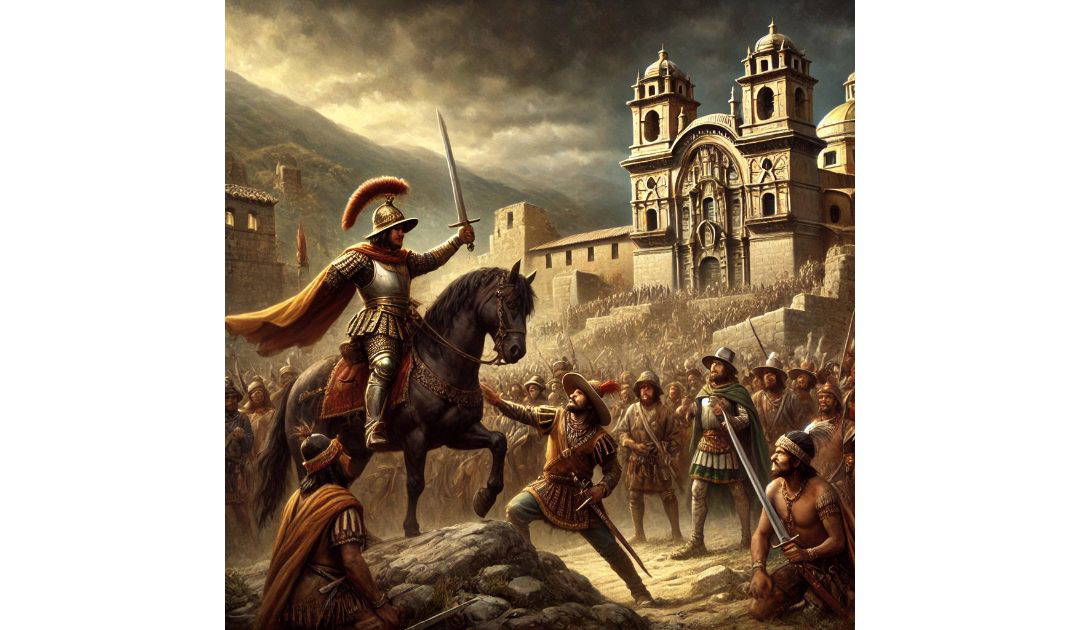On 15th November 1533 Cuzco was captured. Francisco Pizarro, a Spanish conquistador, is best known for his conquest of the Inca Empire and the capture of its capital, Cuzco, in 1533. His journey was driven by ambitions of wealth, power, and spreading Christianity, marking a transformative yet devastating chapter in South American history.
Pizarro began his exploration of the Inca Empire after hearing tales of its immense wealth, previously led by Hernán Cortés’s conquest of the Aztecs in Mexico. In 1529, he secured a charter from Spain that authorized him to conquer and govern the lands of Peru. Pizarro, accompanied by a small group of determined soldiers, sailed down the coast of South America, eventually entering Inca territory in 1532.
At the time, the Inca Empire was weakened by internal strife. A recent civil war had broken out between Atahualpa and his brother Huáscar over succession rights, leaving the empire vulnerable. Pizarro exploited this instability by capturing Atahualpa during the Battle of Cajamarca. The Inca ruler offered a ransom of gold and silver that filled an entire room, a staggering sum even by European standards. But despite receiving this ransom, Pizarro executed Atahualpa, further destabilizing the empire.
In November 1533, Pizarro and his men marched on Cuzco, the heart of the Inca Empire. The Spanish faced resistance but, with superior weaponry, horses, and allied indigenous groups who opposed Inca rule, they managed to overwhelm the defenders. The capture of Cuzco was a significant blow, symbolizing not only the fall of the Inca but also the loss of a deeply sacred city. Cuzco was home to the most important temples and palaces, filled with gold and other precious materials that symbolized Inca spirituality and power.
After the conquest, Pizarro and his men looted Cuzco, taking gold, silver, and artifacts of immense cultural significance. In the years that followed, Spanish settlers and missionaries reshaped the city, constructing churches on the ruins of Inca temples and enforcing Catholicism upon the indigenous population. The capture of Cuzco marked the decline of the Inca civilization, ushering in centuries of Spanish colonial rule.
While Pizarro achieved fame and wealth, his actions left a complex legacy. The destruction of Cuzco and subjugation of the Inca Empire stand as reminders of the costs of conquest and the profound impact European colonization had on indigenous cultures in the Americas.

